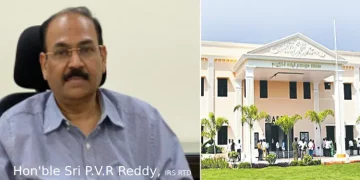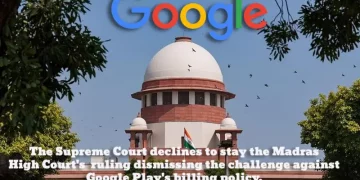While admitting that architectural elements and images of Hindu and Jain deities were reused for Qutub complex building, the Archaeological Survey of India (ASI) told a Delhi court that this could not be used to claim right to worship over protected sites.
The Archaeological Survey of India (ASI) has told a Delhi court that, while there was no denial of the existence of Hindu sculptures inside the Qutub Minar complex, the protected site does not have a fundamental right to workshop.
While the ASI acknowledged that architectural elements and pictures of Hindu and Jain deities were utilised in the Qutub Minar complex, it argued that this could not be used to claim the right to worship over monuments protected by the Ancient Monuments and Archaeological Sites and Remains Act, 1958. (AMASR Act).
The ASI’s decision came in response to a petition asserting that the Qutub complex in South Delhi, which includes the renowned minaret, was formerly a complex of 27 “lofty” Hindu and Jain temples before being destroyed in the 12th century by Qutb-ud-din Aibak, who erected the current structures.
“Fundamental right cannot be availed in violation of any status of the land. The basic principle of protection/conservation is not to allow starting of any new practice in a monument declared and notified as a protected one under the Act. Revival of worship is not allowed wherever it is not practiced at the time of protection of a monument,”
ASI stated to court
The affidavit also claimed that the Ancient Monument and Archaeological Sites and Remains Act, 1958, made no provision for worship to begin at any live monument.
“The Qutub Minar is not a place of worship and since the time of its protection from the Central government, the Qutub Minar or any part of the Qutub Minar was not under worship by any community,”
ASI said
The Qutub Minar Complex was built using architectural elements and pictures of Hindu and Jain deities, according to the report.
“This is very clear from the inscription in the complex which is open for public viewing,” .
ASI stated
However, agreeing to the contention of any person claiming a basic right to worship in this centrally protected monument would be contradictory to the provisions of the AMASR Act.
On behalf of deities, a lawsuit was brought. Lord Vishnu and Lord Rishabh Dev have sought the restoration of deities within the complex, as well as the right to do puja and darshan of the deities, through attorneys Hari Shankar Jain and Ranjana Agnihotri.
Civil Judge Neha Sharma of the Saket Court dismissed the case in December 2021, ruling that past wrongs could not be used to disrupt the current and future harmony.
That order is being challenged in the current case before the Additional District Judge.
The lawsuit seeks a ruling that the site in question, Quwwat-Ul-Islam, is a massive temple complex that has been designated as a protected monument under Section 3 of the Ancient Monuments Preservation Act.
The claimants claim that Mohammed Ghori’s commander Qutub ud-Din Aibak destroyed the Shree Vishnu Hari Temple and 27 other Jain and Hindu temples, as well as raising interior structures within the temple complex.
The temple complex was eventually dubbed the ‘Quwwat-Ul-Islam Mosque,’ and it was argued that because Muslims never declared the site a Waqf property before or after construction, it could never be utilised as a mosque.













